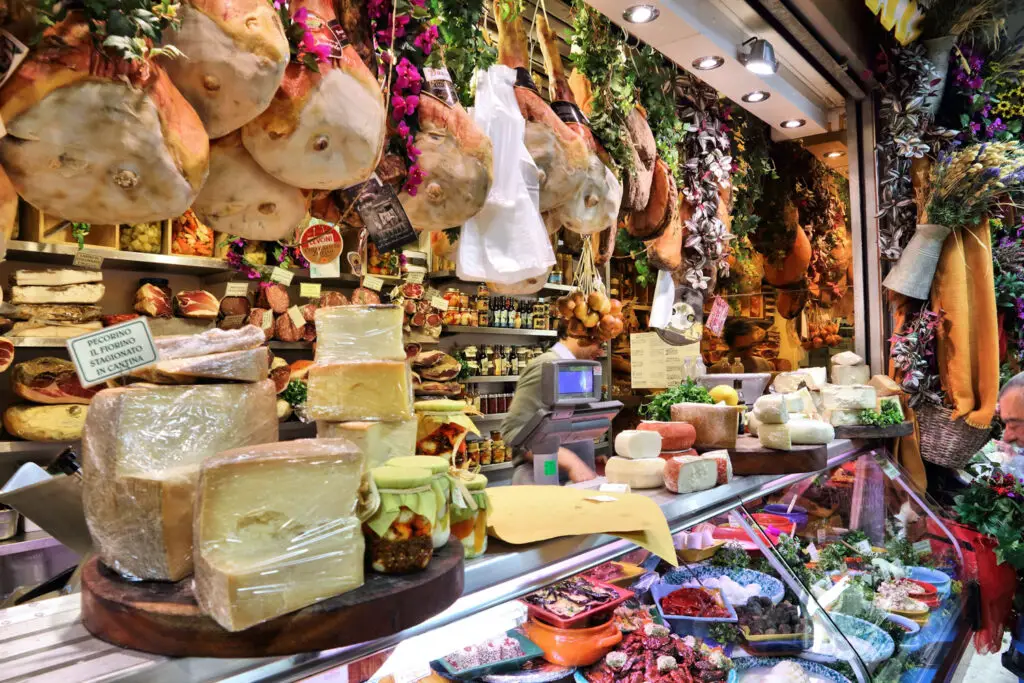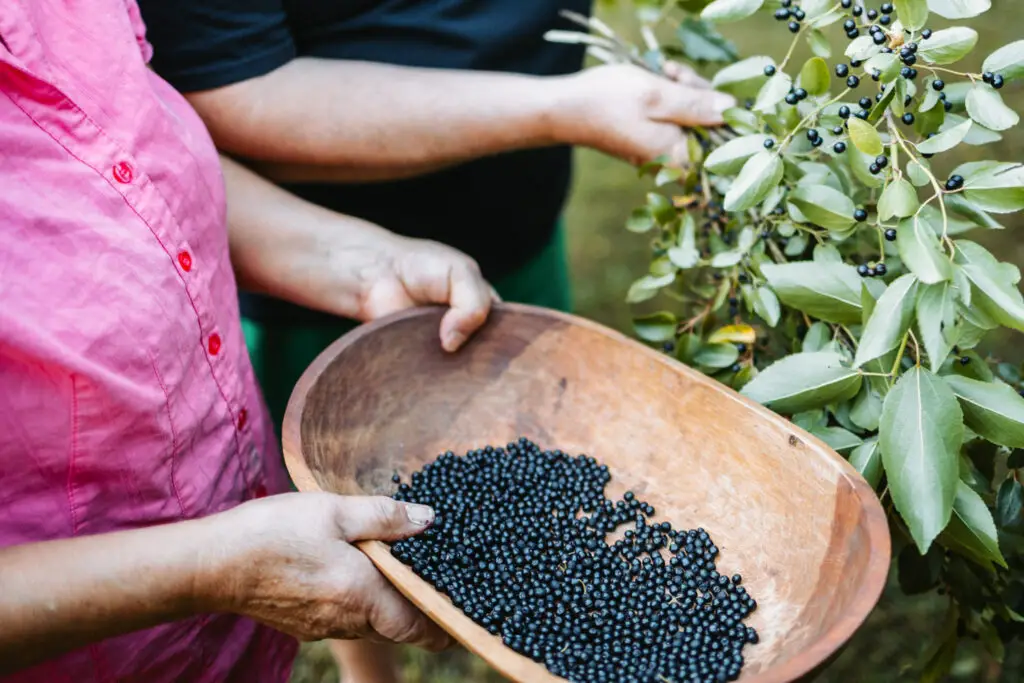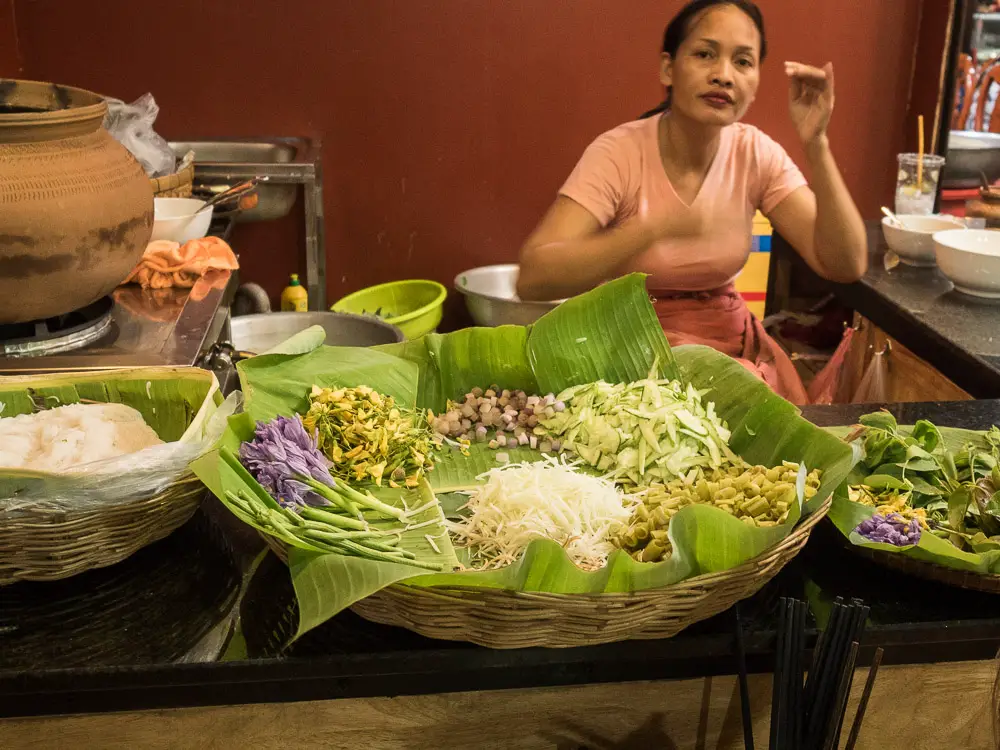As an Amazon Associate I earn from qualifying purchases. Please read the disclaimer for more info.
What is culinary tourism? Also known as food tourism or gastronomy tourism, it is all about exploring a destination through its flavors. It’s a way to get a taste—quite literally—of a place’s cultural and culinary identity.
When you decide to take a trip based on the foods and beverages that a region is known for, you’re diving into a delicious realm of travel that satiates more than just your appetite. It’s a sensory adventure where your taste buds lead the way as you discover local dishes, traditional techniques, and the stories behind every bite.
Imagine yourself wandering through vibrant street markets, sampling exotic spices, or sitting at a table with locals enjoying a home-cooked meal.
Culinary tourism unfolds in cooking classes, wine tastings, and farm-to-table experiences. It’s a chance for you to connect with a region’s history, people, and traditions.

You don’t need to be a food expert to indulge in culinary tourism; all you need is curiosity and an appreciation for good food. As you plan your next getaway, why not let your cravings be your compass and turn each meal into an opportunity to create unforgettable memories?
What sets culinary tourism apart is its participatory nature. You’re not just eating; you’re engaging with the food landscape, meeting producers, chefs, and fellow food lovers.
This kind of travel encourages immersive experiences, such as picking fresh ingredients at an organic farm or learning to make pasta in an Italian grandmother’s kitchen. The stories and skills you bring back from your journey become souvenirs that last a lifetime.
Whether it’s savoring a new taste or understanding the intricate process of making traditional dishes, culinary tourism offers an authentic slice of life wherever you go.
Explore Italy as a food destination: 10 Best Italian Cooking Vacations 2024: Buon Appetito.
Exploring Culinary Tourism
Culinary tourism is about pursuing unique and memorable eating and drinking experiences. Whether you’re munching on local street food in Mexico or enjoying a fine dining experience in Paris, you’re participating in a flavorful journey.
Definition and Scope
Culinary tourism, also known as food tourism or gastronomy tourism, taps into the desire to explore a culture through its flavors. Your culinary adventures can range from local cooking courses to winery tours, encompassing any travel experience where the primary goal is to discover new tastes and food traditions.
According to the World Food Travel Association, this form of tourism is not limited to gourmet food but includes a complete range of experiences.
History and Evolution
The concept of traveling to various destinations to experience the food they offer has historical roots.
Over time, it’s evolved from leisurely aristocratic tours of the 19th century, focusing on European haute cuisine, to a much broader scope today. You’ve got food bloggers, TV shows, and festivals that further popularize this form of tourism, making it accessible to food tourists of all types seeking a taste of authenticity.
Types of Culinary Tourism
You’ll find a delectable array of culinary tourism types to satisfy your appetite for adventure:
- Food Festivals: A chance to try a variety of dishes at one go, usually themed around specific types of food or cultures.
- Cooking Classes: Hands-on opportunities to learn the intricacies of a region’s cuisine.
- Restaurant Tours: Guided tours focusing on a series of eateries known for authentic and innovative culinary creations.
- Street Food Tours: Dive into the heart of the city’s food scene with a food tour dedicated to street food.
- Winery/Brewery/Distillery Visits: Explore the world of drinks from production to the first sip.
- Farm or Market Tours: Get a fresh perspective by tracing the journey of ingredients from source to plate.

The Culinary Tourism Experience
Culinary tourism spotlights the delicious intersection between exploring new destinations and savoring their unique food offerings. Your journey will lead you to taste the essence of the region’s culture and history expressed through its cuisine.
Savoring Local Flavors
Immerse yourself in the rich tapestry of local gastronomy by indulging in regional specialties. Authenticity is emphasized, whether it’s a street food stall serving fresh, spicy tacos or a renowned restaurant famed for its delicate pastries. You’ll uncover the heart of your destination’s culinary identity, from traditional dishes passed down through generations to contemporary interpretations that fuse different cultural influences.
- Local Specialties: Tasting iconic regional dishes.
- Seasonal Offerings: Enjoying food made from ingredients at their peak.
- Distinctive Food: Discovering what sets the local cuisine apart.
Culinary Tours and Activities
Get a taste of the local scene through organized food tours. These guided experiences often include a curated selection of eateries, each chosen to represent a facet of the culinary landscape. From bustling markets to high-end bistros, you’ll gain an overview of the destination’s dining spectrum. And don’t miss out on the chance to attend cooking classes, where you can don an apron and learn to recreate the flavors of your travels in your own kitchen.
- Food Tours: A guided tour through diverse culinary stops.
- Cooking Classes: Hands-on learning to prepare local dishes.
- Market Visits: Experiencing the hub of local food culture.

Interactive Food Experiences
Step into an interactive realm where you’re more than just a spectator. Engage with local chefs during cooking classes as they share their secrets and techniques. Pull up a chair at communal tables where meals are shared and stories told, or roll up your sleeves to participate in a cooking workshop. Throughout these experiences, the dynamic of food and drink intertwines with education and community, offering you a deeper connection to the locale.
- Chef-Led Workshops: Deep dives into culinary crafts.
- Tasting Sessions: Sampling a variety of local offerings.
- Food Festivals: Celebrating with fellow food enthusiasts.
Economic and Social Aspects
Food tourism plays a crucial role in shaping destinations’ economic and social landscapes. Tourists contribute significantly to the area’s financial well-being by indulging in local cuisine.
Local businesses, including restaurants and farms, benefit directly from travelers seeking authentic dining experiences, leading to job creation and community development.
In addition to economic impacts, culinary tourism encourages sustainable practices within the food tourism industry. Destinations frequently promote locally grown and harvested foods, which reduces long-distance transportation and minimizes consumption’s carbon footprint.
Moreover, culinary tourism fosters community and cultural connections. Sharing a meal opens doors to understanding the local culture and strengthens bonds within the community.
Global and Regional Cuisines
Exploring the world through taste lets you experience the heart of a culture. Each region’s unique flavors and cooking traditions are showcased in their cuisine, which is often a point of pride.
When you set off on a culinary adventure, you’re not just trying new foods; you’re literally tasting the culture’s history and geography on a plate. Cuisine transforms into an edible map where regional specialties provide a sense of taste of place. For instance:
- Italy: Think beyond spaghetti. Each region boasts its own signature, like the creamy risottos of the north and the zestier, olive-oil-rich dishes of the south.
- Japan: It’s not just sushi and ramen. Delicate flavors and meticulous presentation reflect the country’s aesthetic and philosophical ideals.
- Mexico: Dive into the tapestry of Mesoamerican and European influences with dishes ranging from the complex Oaxaca moles to the coastal areas’ fresh seafood ceviches.
- France: Its cuisine is a cornerstone of the world’s fine dining. From classic sauces to perfectly-executed tartes, you’ll enjoy the artistry of French cooking.
Educational Aspects

Exploring the educational aspects of culinary tourism, you’ll have the opportunity to expand your knowledge and skills in food preparation and production. Through hands-on experiences and expert insights, you’ll get an in-depth look at the culinary world.
Culinary Workshops and Cooking Classes
You’re in for a treat with culinary workshops and cooking classes where professional chefs share their secrets. You’ll learn:
- Techniques: Master the art of slicing, dicing, and sautéing.
- Recipes: Take home new recipes to impress friends and family.
- Presentation: Discover the importance of plating for a visual feast.
Brewery and Winery Tours
Next up, brewery and winery tours allow you to dive into the beverage industry. You’ll experience:
- Processes: Understand the steps of brewing beer or crafting wine.
- Tastings: Develop your palate through guided tastings.
- Pairings: Find out the art of pairing drinks with food.
Learning About Agriculture and Local Produce
During your journey, paying a visit to farms or markets lets you appreciate agriculture and local produce. Here’s what’s on the menu:
- Farming Methods: Gain insight into organic and sustainable practices.
- Local Ingredients: Discover the freshest, locally sourced ingredients.
- Seasonality: Learn how to cook with the seasons for optimal flavor.
Conclusion
In conclusion, culinary tourism is more than just indulging in a region’s food and drink; it’s about immersing oneself in the local people’s culture, traditions, and lifestyle.
Whether you’re tasting a farm-to-table meal in a rural setting or savoring a gourmet dish in a city’s bustling heart, you’re participating in a global phenomenon that fosters sustainability, boosts local economies, and deepens cultural connections.
So, the next time you ask yourself, “What is Culinary Tourism?” remember that it’s an adventure of taste that connects us to the heart of a destination and its people, making travel experiences truly unforgettable.

